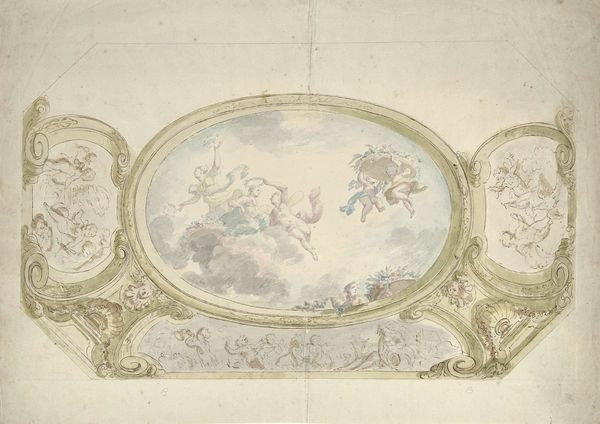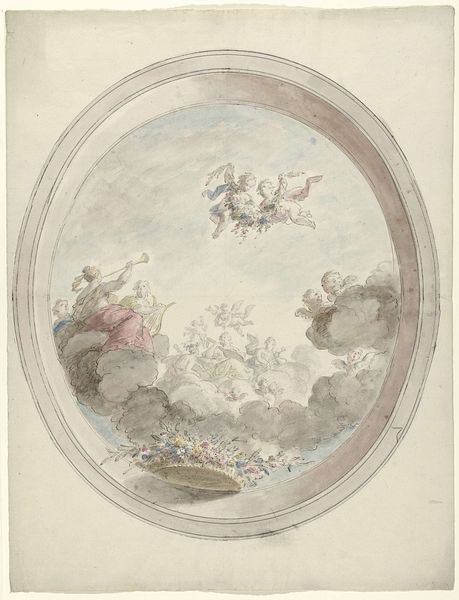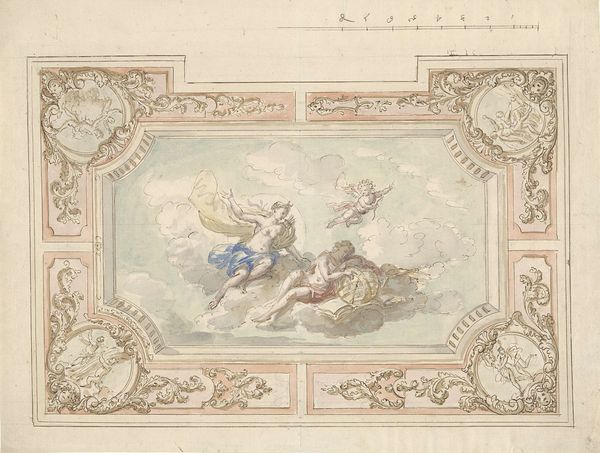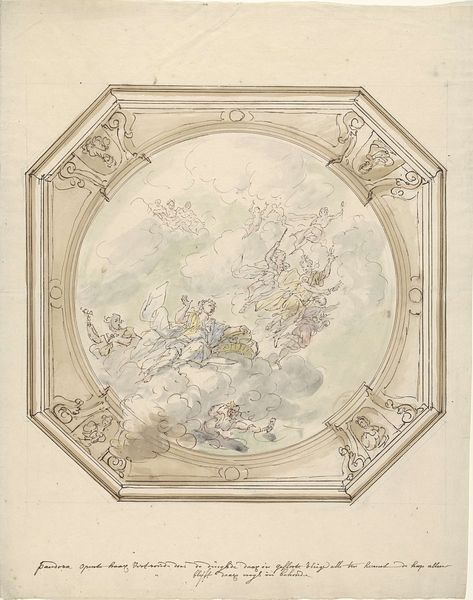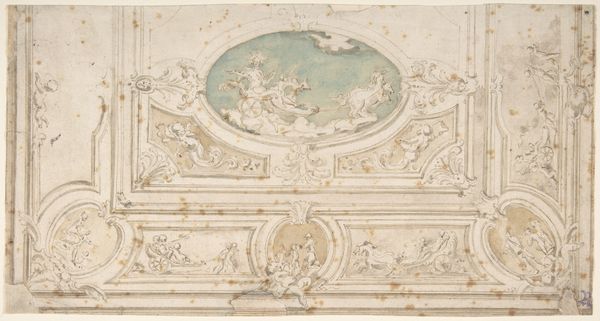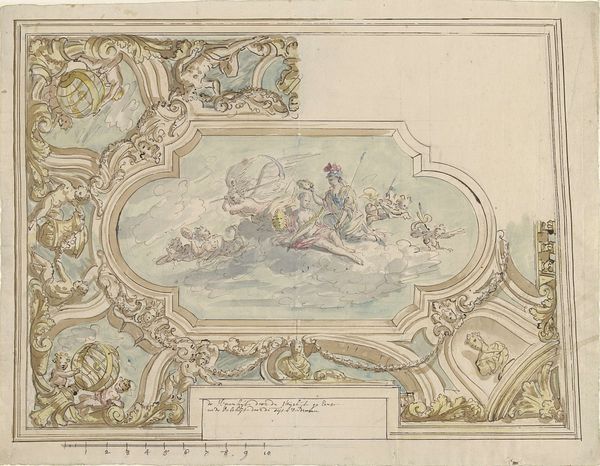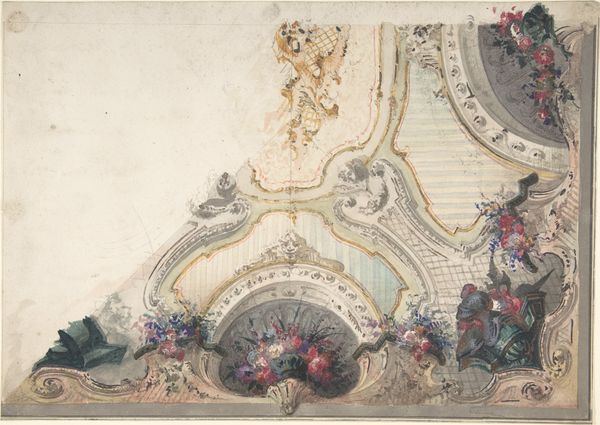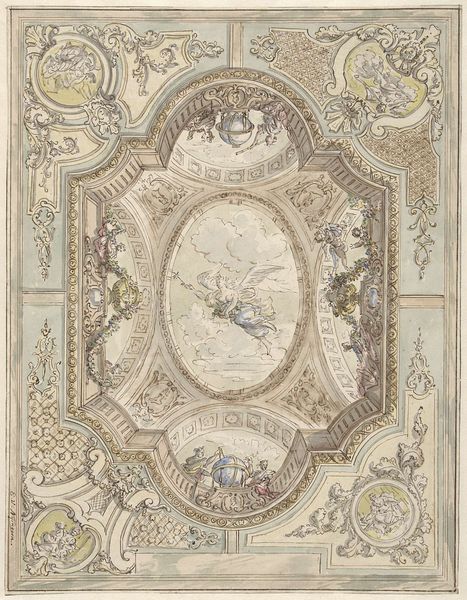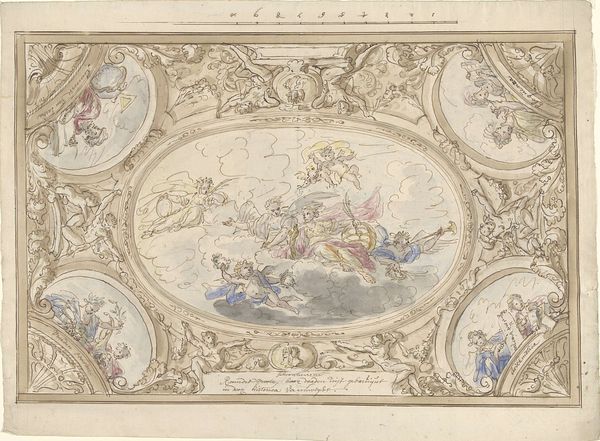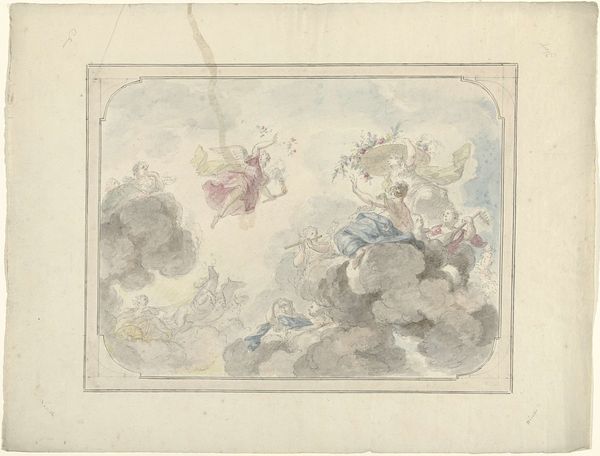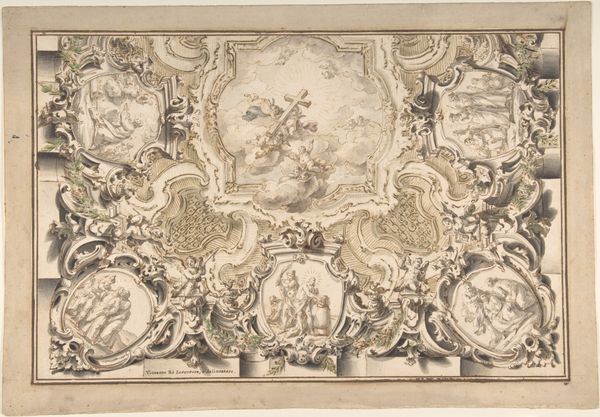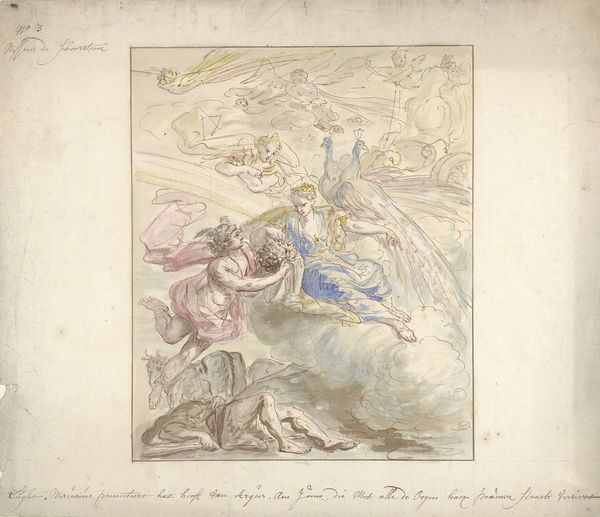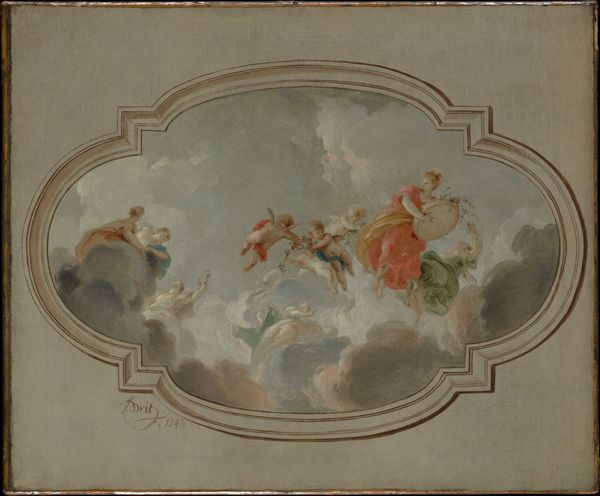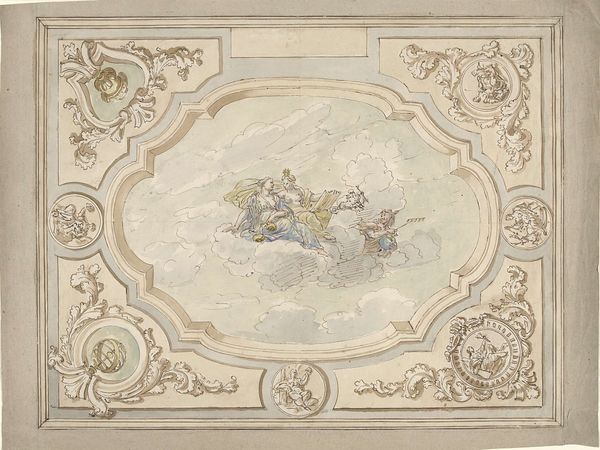
painting, fresco, watercolor
#
allegory
#
baroque
#
painting
#
fresco
#
watercolor
#
coloured pencil
#
watercolor
Dimensions: height 378 mm, width 540 mm
Copyright: Rijks Museum: Open Domain
Editor: Here we have "Ontwerp voor een plafondschildering met Charitas en Pax," or "Design for a ceiling painting with Charity and Peace," by Dionys van Nijmegen, created sometime between 1715 and 1798. It looks like a watercolor and colored pencil sketch. It’s ethereal and dreamlike. What can you tell me about it? Curator: Looking at the piece from a materialist perspective, it’s fascinating to consider the artist's choices in conveying these allegorical figures through watercolor and pencil. The softness of the watercolor lends itself well to depicting the idealized forms and fluffy clouds, while the pencil work likely enabled finer details. Think about why van Nijmegen chose this medium. How would this piece change if done in oil paint? Editor: That's a great question! I suppose oil paints would make it more of a finished artwork, instead of a sketch? Was this design ever fully realised as a fresco, or did it remain just a concept? Curator: That's an avenue of inquiry we could delve into deeper, and I suspect understanding the patrons and market of the period will help you situate Van Nijmegen’s decisions. Watercolors were comparatively affordable to produce. And while the wealthy elite wanted frescoes, there was likely a broader middle-class market for art imitating this style. Do you think it would’ve appealed to the growing merchant class? Editor: Absolutely! A design like this offers a glimpse into the lifestyle that the middle-class might aspire to. The relative inexpensiveness of watercolors perhaps made it accessible. It seems like this artwork embodies the intersection of high ideals and emerging commercial realities. Curator: Precisely! Seeing art as part of a complex economic and social system allows us to understand the artist's role not just as a creator, but as a participant in a network of material production and exchange. It forces us to rethink our notion of this object in social-historical context. Editor: That definitely provides a new and insightful angle, beyond just aesthetic considerations! I now recognize that a ceiling design tells stories of production, materials, and its intended audience, not only those of charity and peace!
Comments
No comments
Be the first to comment and join the conversation on the ultimate creative platform.
